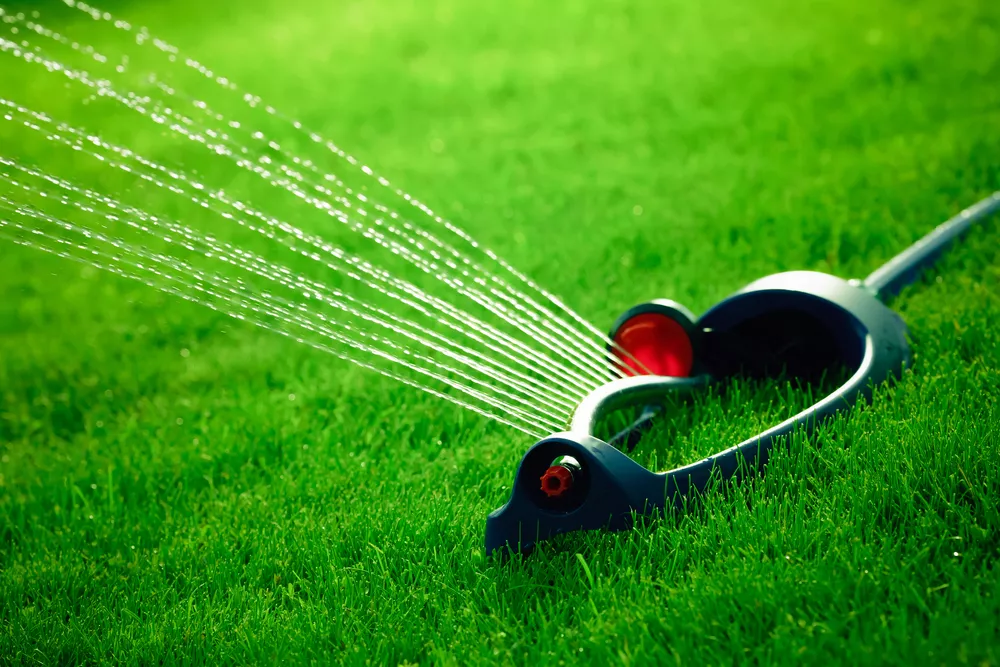
Caring for your lawn in a drought can be a daunting task. When we think of garden lawns, most of us picture a lush, green carpet that’s soft underfoot. An occasional mow in the warmer months is all we think we have to do. Lawns largely take a back seat to the rest of our garden. We are far more likely to concentrate our efforts on growing plants, keeping areas clean and tidy and our garden fence in good condition.
Like many things in life, things don’t always go to plan! So, what do you do if your lawn is looking more like a desert than a lawn? What if it’s got brown patches and the grass itself seems to have dried out in the hot sun? You may worry that your lawn is dying and you’ll end up with the arduous task of digging it up and replacing it with brand new turf. Both a time-consuming and expensive exercise.

Well, fear not! Caring for your lawn in a drought doesn’t automatically mean fighting a losing battle. In fact, it’s probably not as bad as it looks. It’s actually very hard to kill a lawn. They are hardier than they may appear. You may have noticed that other areas of your garden suddenly grow grass, such as in pots. It often seemingly appears out of nowhere. That’s because grass is remarkably strong for what it is and has a big desire to grow.
So here’s what you do if your lawn is turning brown and you want to restore it back to its former glory:
Mow it with a higher cut setting

Give your lawn a little more length than you normally would. This will help it to retain water.
When you do mow, don’t discard the grass cuttings
Keep them and redistribute them across your lawn. Yes, it may not look quite as tidy, but the primary objective here is to revitalise your lawn and get it growing nice and healthy again. Using the cuttings in this way is akin to mulching. It will stop water from evaporating as quickly.

Water it, but at the right time
Watering it seems obvious, but there are best practices when it comes to watering anything in the garden. If you water your lawn in the hot middle-of-the-day sun, much of that moisture is going to be lost to the air. Undoing all your work and wasting water. Instead, do one of the following:
Water your lawn in the morning before it gets too warm. This is much more likely to help your lawn retain water and get down to the roots. If that’s not practical:
Water your Lawn in the evening instead
This is the next best option. After the hottest part of the day is over and it’s cooled down, your water will evaporate slower.
Of course, if you are experiencing a drought-ridden lawn, chances are, it’s very hot and there has been very little if any, rainfall. Whilst we haven’t had hosepipe bans in the UK for some time, as we see our climate changing, bans could be more frequent in the future. So for this reason:
Try to Avoid using Sprinklers

As convenient as they are and often quite fun too, sprinklers use an incredible amount of water in comparison to using a hosepipe or watering can. If you’re on a water meter, this is even more of an issue to bear in mind. Did you know that a sprinkler typically uses 1000 litres of water an hour? That’s about the same amount used by one person in a whole week. Instead:
Collect rainwater and use that to water your lawn

This is your most eco-friendly option. Having a water butt in your garden makes use of water that would otherwise go to waste and best of all, it’s free. Fill your watering can and make sure the sprinkler attachment is fitted for maximum efficiency. Very handy for those harsh summer months.
If you have to use your hose pipe

Use the hand attachment that most hose pipes come with these days. Set it to the sprinkler setting and give your lawn a good dose first thing in the morning or late in the evening. Keep an eye on your lawn to see how it reacts in order to gauge how much water it needs. Once you have your lawn back to a reasonable state, lessen how much you water it until you see it starting to turn brown again. Now you’ll know how much it needs so you don’t use any more water than you need to.
We hope our tips on caring for your lawn in a drought are helpful.
‘Til next week!
Jo @ ColourFence
Follow us on Socials





